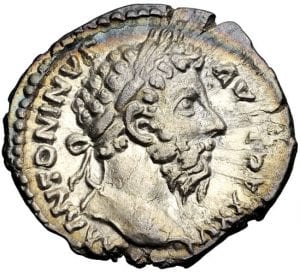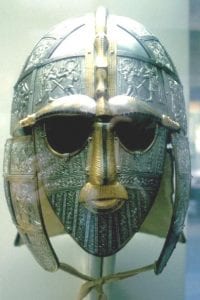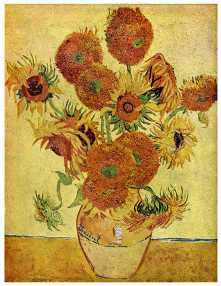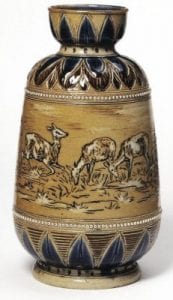 The work of a historian is a bit like the work of a detective. Analysing historical sources is a key feature of this work.
The work of a historian is a bit like the work of a detective. Analysing historical sources is a key feature of this work.
A historian will undertake research to find evidence in the form of primary and secondary sources. These sources will then be analysed to form conclusions about the past.
The information that can be gained from a primary or secondary source is not always obvious. A historian will therefore ask questions of a source to find out more information.
The six questions that should be asked of historical evidence are: Who? What? Where? When? Why? How?
The examples below show how one of the six key questions can be used to analyse a source. During the course of a historical investigation, a historian would ask all six questions of each source.
Who?
Source analysed – A Roman coin
 Who does it depict? – Marcus Aurelius, Roman emperor from 161 to 180 CE.
Who does it depict? – Marcus Aurelius, Roman emperor from 161 to 180 CE.
Who made it? – The Romans – between 121 and 180 CE.
Who used it? – Romans in the Eastern Empire. It is a drachma and these coins were only used in the Eastern Empire.
Who owns it now? – A coin collector.
What?
Source analysed – An Anglo-Saxon helmet
 What is the source? – It is an Anglo-Saxon helmet
What is the source? – It is an Anglo-Saxon helmet
What does it show? – It shows that the Anglo-Saxons wore armour. It is very beautiful with lots of decoration in gold and silver, so it also shows that it was worn by a very important person, possibly a king.
What was it used for? – It was used to protect the head in battle. It was also possibly used during ceremonies to show the owner’s wealth.
What is it used for now? – It is displayed in the British Museum to help people learn about the Anglo-Saxons.
Where?
Source analysed – Mona Lisa, a painting by Leonardo da Vinci
 Where was it painted? – In Florence, Italy by the artist Leonardo da Vinci who continued to work on the painting until 1517 and possibly until he died in 1519.
Where was it painted? – In Florence, Italy by the artist Leonardo da Vinci who continued to work on the painting until 1517 and possibly until he died in 1519.
Where did it go in 1519? – It was sold to the French King, Francis I.
Where was it used? – It was used as a wall decoration in one of the palaces owned by Francis I.
Where is the painting now? – It was acquired by the Louvre Museum in 1797 and remains there on public display.
When?
Source analysed – The Act of Supremacy 1534

When was it made? – It was an Act of Parliament made in 1534
When was it used? – It was used in 1534 to legally make Henry VIII Head of the Church in England.
When does it show? – It shows the nature of religion in England in 1534.
Why?
Source analysed – A poster of a Van Gogh painting
 Why was it made? – It was made as a wall decoration. It was also made because people like the painting but cannot afford to buy the original painting so purchase a poster instead.
Why was it made? – It was made as a wall decoration. It was also made because people like the painting but cannot afford to buy the original painting so purchase a poster instead.
Why has it survived? – It has survived because it was made recently and has been looked after by its owner.
Why is it useful to a historian? – Because it shows that this particular painting is popular and people like to have it on their walls.
How?
Source analysed – A Royal Doulton vase made in 1874

How do we know when it was made? – We know when it was made because it has a stamp on the base showing a number. This number can be looked up in Royal Doulton catalogues to find more information.
How was it made? – The catalogue information shows it was made in a London factory and was decorated by Hannah Barlow.
How was it used? – It was used to display cut flowers.
How has it survived? – It has survived because Royal Doulton pottery is collectable and can be valuable. This vase has clearly been looked after.
Citation Information:
Heather Y Wheeler. (2020). Analysing Historical Sources. Available: https://www.historykeyskills.com/analysing-historical-sources/. Last accessed July 27th, 2024

